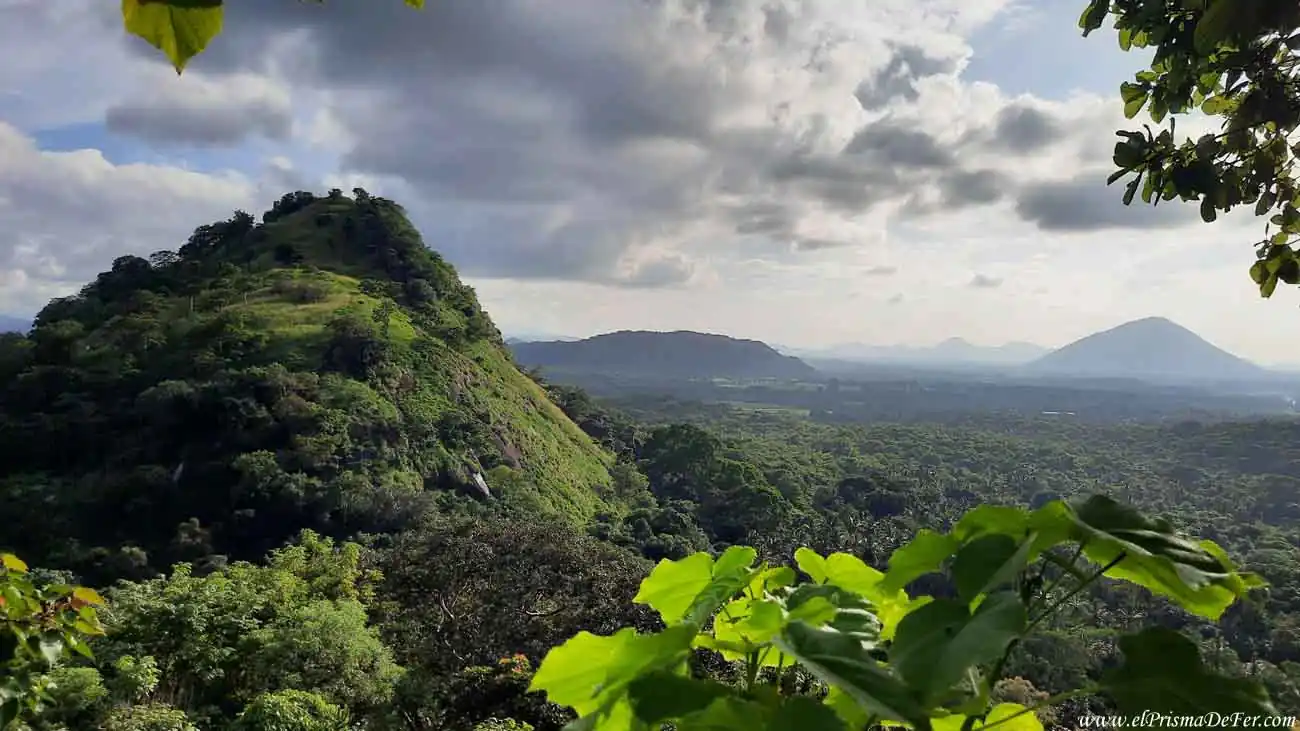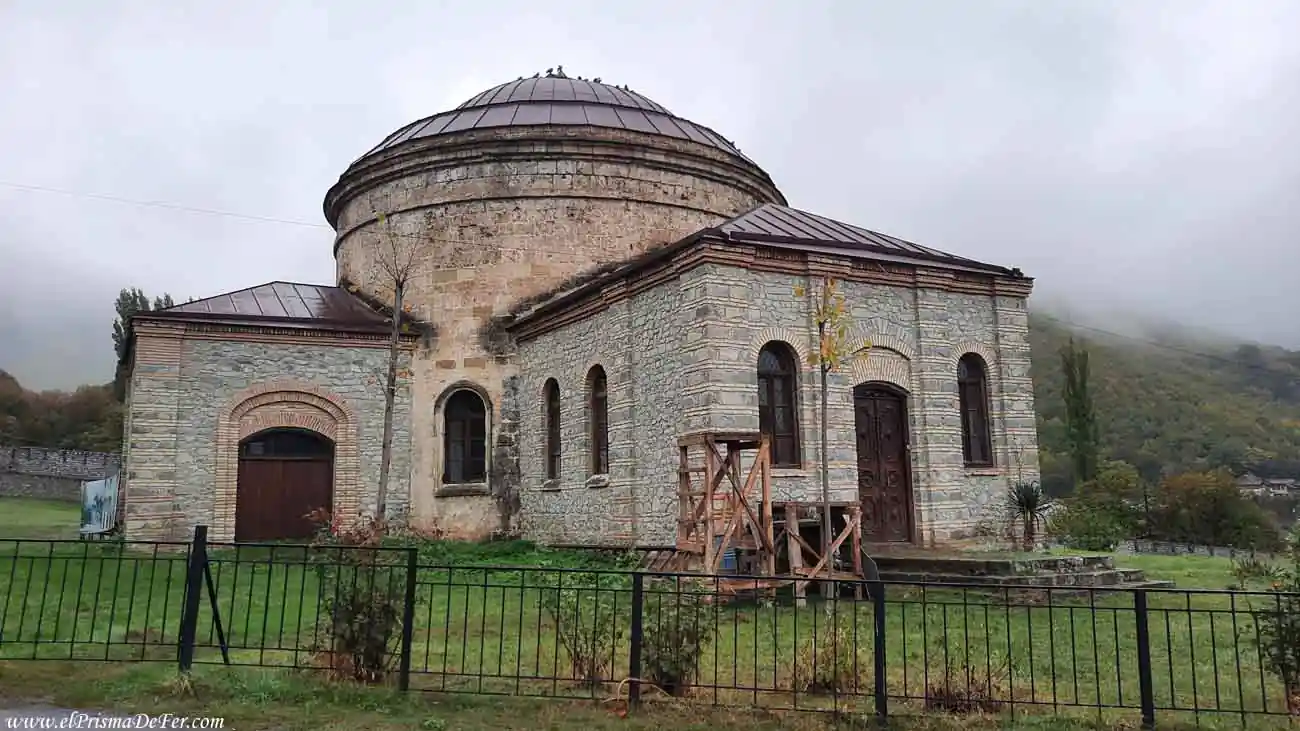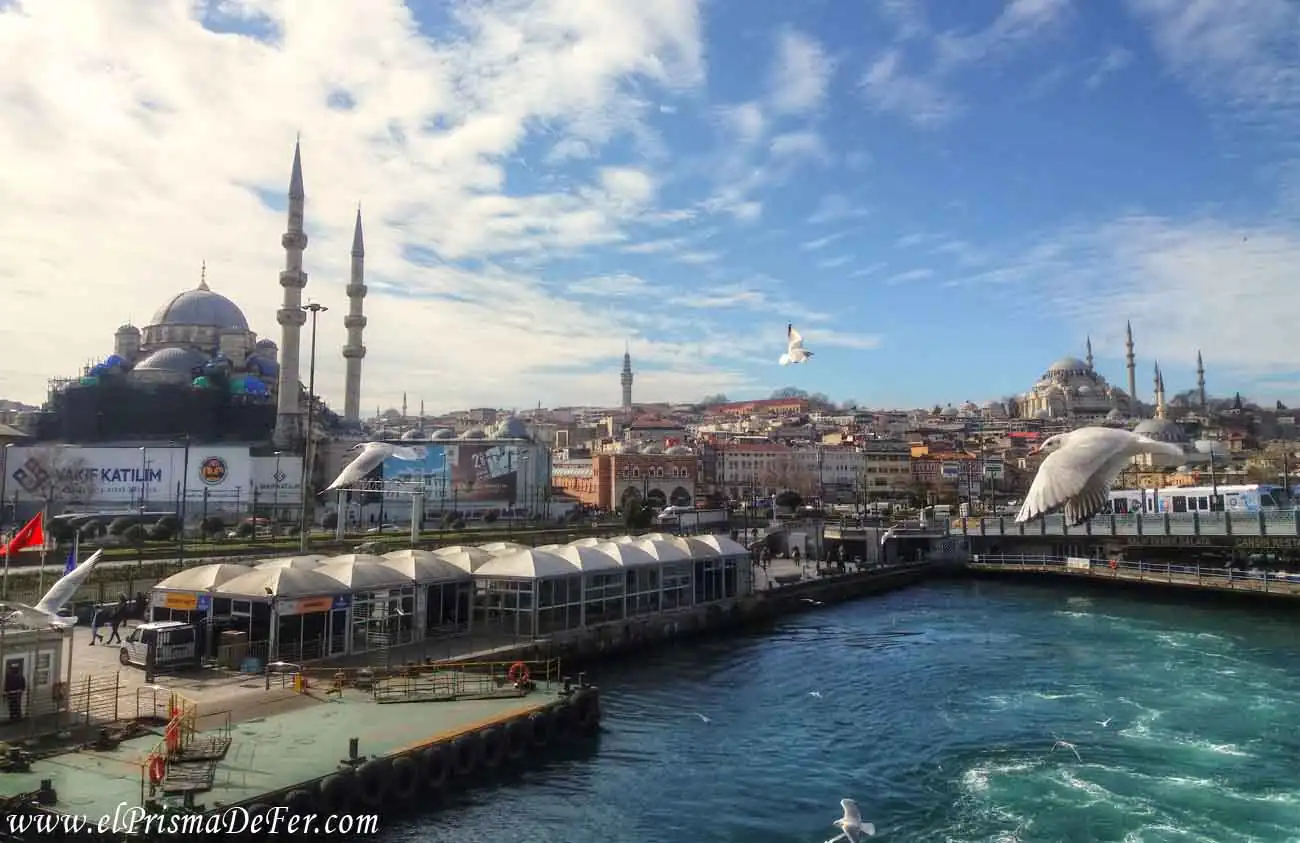Traveling through Sri Lanka is intense and surprisingly varied for such a small country. In just a few days, you can go from tranquil beaches to tea plantations nestled in the mountains, from temples steeped in history to elephant safaris.
It's an easy destination to explore on your own, with good tourist infrastructure, affordable prices, and local hospitality that makes you feel comfortable and safe from the first moment.
Unlike other South Asian countries, such as its neighbor India, Sri Lanka combines the best of the region without overwhelming, with short distances, frequent transport, manageable cities, and people accustomed to tourism. This makes it ideal for both first-time visitors to Asia and those already exploring the continent.
In this guide I'll tell you how to get around, a bit of history and interesting facts, what places to explore, how much to spend and what to expect from Sri Lanka, without embellishment or romanticizing. The idea is to give you the practical information I wish I'd had before going, so you can plan your route clearly and avoid the classic first-day headaches.

Table of Contents
What to know before traveling to Sri Lanka
| Language 🗣️ |
| The official languages are Sinhala and Tamil. English is widely used in tourism and in cities, so getting around and communicating is usually not a problem. |
| Currency 💵 |
| The currency is the Sri Lankan rupee (LKR). Exchange rates at the airport are usually less favorable, so it's best to exchange as little as possible there and do the rest at exchange bureaus in the city. You'll find ATMs without any problem in tourist areas, although in smaller towns it's better to carry cash. |
| Religion |
| The predominant religion is Theravada Buddhism, which you'll see reflected in temples, festivals, and daily life. There are also Hindu, Muslim, and Christian communities, so the religious atmosphere is quite diverse. |
Location  |
| Sri Lanka is an island located south of India, in the heart of the Indian Ocean. This strategic position explains why it has such diverse cultural influences and why it's so easy to combine mountains, jungle, and beaches in just a few days. |
| Capital 🏙️ |
| The administrative capital is Sri Jayawardenepura Kotte, although in practice almost everything goes through Colombo, the largest city and the main point of entry into the country. |
| Visa 🛂 |
| To enter Sri Lanka you need an ETA, an electronic authorization that is obtained online before your trip. The process is simple, usually approved quickly, and allows you to enter the country for tourism. It is important to do so only from the official website to avoid intermediaries who charge extra. |

My visit to Sri Lanka was part of a larger trip along the ancient Silk Road. In this post you can learn more about the countries I visited and how to do it all on your own.
Where is Sri Lanka located?
Sri Lanka is an island located in south Asia, just southeast of India, separated from it by the Palk Strait.
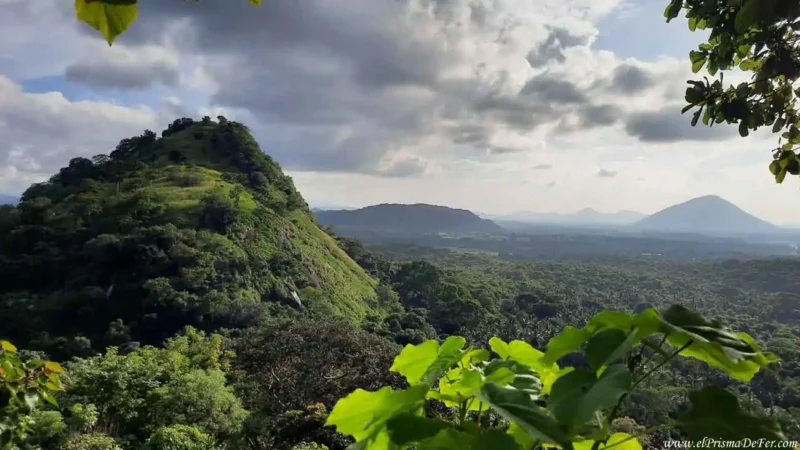
Although geographically very close to the Indian subcontinent, only about 30 km at its closest point, Sri Lanka has its own identity, with a culture, history and pace of life that feel different as soon as you arrive.
The country is completely surrounded by the Indian Ocean, which explains its tropical climate, the seasons marked by monsoons and, of course, the huge number of beaches in all its cardinal points.
Its location also made it a key stop for Arab, Portuguese, Dutch, and British traders for centuries, leaving a mix of influences that can be seen today in cities like Galle or Colombo.
Furthermore, its relatively compact size makes it very easy to explore. In just a few hours, you can travel from the coast to the central mountains, or from ancient ruins in the north to tea plantations in the highlands. This diversity within short distances is one of the reasons why Sri Lanka is such an attractive destination.
A brief history of Sri Lanka
Sri Lanka's history is long, complex, and marked by the mixture of cultures that arrived on the island over millennia.
The first Sinhalese kingdoms emerged more than 2,500 years, with Anuradhapura as one of the oldest and most important capitals. Since then, Buddhism has become a central part of the country's identity, introduced in the 3rd century BCE and deeply rooted to this day.

Throughout the centuries, different kingdoms dominated different areas of the island, including the Tamils in the north, with their own language and traditions.
Subsequently, Sri Lanka became an important hub for maritime trade routes, attracting European powers: first the Portuguese, then the Dutch, and finally the British, who controlled the entire island from the 19th century onward. During this colonial period, tea cultivation expanded, becoming one of the country's most significant economic symbols.
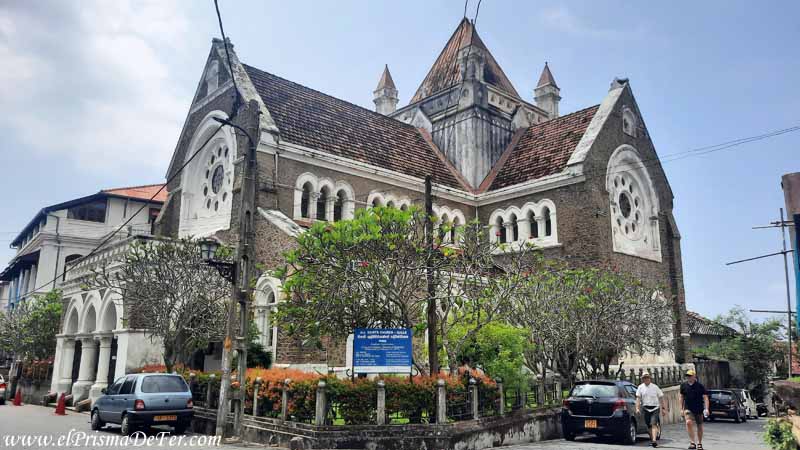
Sri Lanka gained its independence in 1948, but coexistence between the Sinhalese majority and the Tamil minority deteriorated, culminating in a civil war that lasted almost 30 years (1983–2009). The conflict left deep scars and still shapes some internal debates, especially in the north and east.

Today, although the country has gone through economic and political crises in recent years, Sri Lanka is experiencing a process of recovery and opening up to tourism.

How to get to Sri Lanka
Getting to Sri Lanka almost always involves traveling by air. The main point of entry is Bandaranaike International Airport (CMB), located in Negombo, about 35 km north of Colombo. It is the largest airport in the country and handles most international flights.
Flights from different parts of the world
Sri Lanka does not usually have direct flights to America or Europe, so the most common way to travel is with layovers in hubs such as Doha (Qatar Airways), Dubai (Emirates, IndiGo), Abu Dhabi (Etihad), Istanbul (Turkish Airlines) or Kuala Lumpur (AirAsia/Malaysia Airlines). These connections offer the smoothest service and often have good fares if booked in advance.
There are also many options from Southeast Asia, as Sri Lanka is a frequent destination to combine with India, the Maldives or Thailand.
Is it possible to get there by sea?
In theory, yes, but in practice there is no regular ferry for passengers between Sri Lanka and India, despite projects being under discussion for years. Cargo ships and occasional cruises are not a viable option for an independent traveler.
How to get around Sri Lanka
Traveling around Sri Lanka can be quite an experience. The country is relatively small, but distances can feel slow due to the condition of the roads, traffic, and geography. Even so, there are several options for exploring it affordably and comfortably.
I wrote a separate post talking about the different ways to get around Sri Lanka, from trains to buses and tuk tuks.

How to get around in Sri Lanka

Sri Lanka vs India: Similarities and Differences
Traveling through Sri Lanka inevitably reminds you of India; there's something about the friendly chaos, the constant honking of horns, and that mix of colors, spices, and smiles that feels familiar if you've already set foot on the subcontinent.
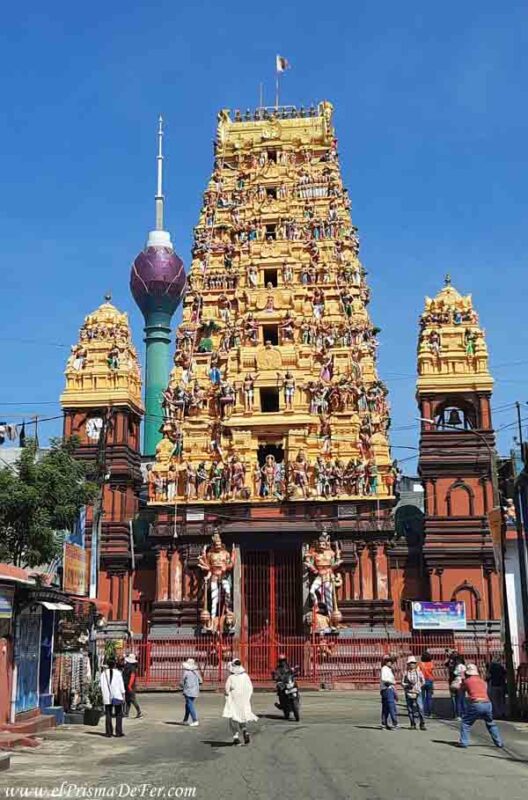
Sri Lanka shares many cultural roots with India, from Buddhist and Hindu traditions to influences on food, clothing, and architecture, and this is noticeable as soon as you arrive. Even certain everyday gestures, such as nodding their head to say "yes," "no," or "I don't know," or using your right hand to eat, remain the same.
But at the same time, Sri Lanka is a different kind of trip—more peaceful, more manageable, and less overwhelming. Distances are short, getting around is easier, and the overall pace is much more relaxed than in mainland India.
Larger cities like Colombo and Kandy are bustling, but nothing like the monumental chaos of Delhi or Mumbai. Furthermore, the country has a very distinct identity, marked by the influence of Buddhism on daily life, the ancient ruins of the Cultural Triangle, British tea plantations, and the unique blend of its colonial past and local traditions.

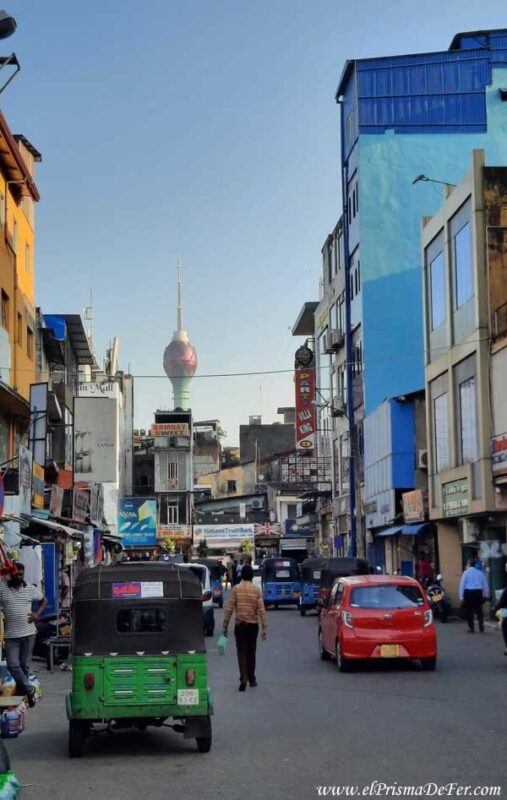
Sri Lanka feels more orderly and accessible, ideal for those who want an intense Asian experience but without the initial shock that India sometimes generates.
The nature of Sri Lanka: an incredibly green country
If there's one thing that surprises you from day one in Sri Lanka, it's how green the country is. Whether you're traveling along the coast, through the highlands, or along some remote road, you'll always be surrounded by vegetation.

Dense jungles, rainforests, palm trees everywhere, and tea plantations that climb entire hills form a landscape that is constantly changing but always maintains that intense green tone that seems to be taken from a tropical postcard.
The biodiversity is enormous for such a small country. You can go from seeing lizards sunbathing on the side of the road to crossing areas where peacocks walk as if they own the place.
In the areas surrounding many national parks, such as Udawalawe, Yala, or Minneriya, it's quite common to find elephants calmly by the side of the road, eating branches or simply strolling. And the monkeys… well, they're everywhere: temples, cities, roads, trees, rooftops. They're part of the everyday landscape.

The roads are another spectacle. There are stretches where you drive through tunnels of trees, with vines, humidity, and that jungle smell that reminds you you're in a real tropical country. In others, the road opens up between tea plantations, rural villages, and forested mountains.

Interesting facts about Sri Lanka
Sri Lanka is a small country, but full of unique characteristics. Here are some interesting facts that will help you better understand its culture and way of life:
🇱🇰 A country with two official names
Until 1972 it was called Ceylon, a name that still appears on iconic products such as tea. Only later did it officially adopt "Sri Lanka".

🐘 Elephants have priority
Elephants are a key part of the country's cultural identity. In some places, especially in rural areas or near national parks, it's common to see signs warning of elephant crossings, almost as if they were "regular pedestrians."

🍵 Birthplace of the famous Ceylon tea
Sri Lanka is one of the world's largest tea producers. The central mountainous region, encompassing Nuwara Eliya, Haputale, and Ella, is covered with plantations that still maintain British colonial traditions.
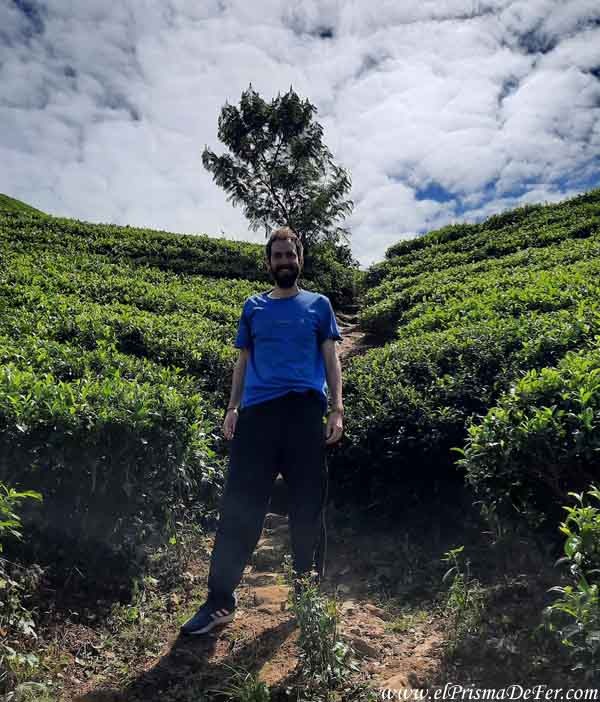
🏏 The national sport is cricket
While in other countries passion revolves around football, in Sri Lanka the king of sports is cricket, a direct legacy of the British period. On important match days, everything comes to a standstill.
🔔 Buddhism permeates daily life
Although Sri Lanka is diverse, around 70% of the population is Buddhist. You'll find temples, dagobas, and Buddha statues throughout the country, even in very remote locations.
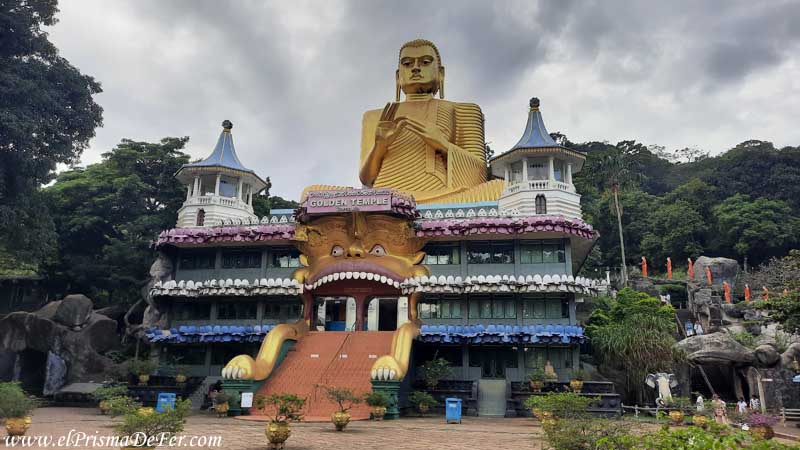
🧡 The color of saffron dominates everyday life
Orange is a color laden with symbolism. Buddhist monks use it as a reminder of simplicity and renunciation. Seeing them walking through markets and streets is part of the everyday landscape.
🌊 Two alternating monsoons
One interesting thing about Sri Lanka's climate is that it has two distinct monsoons that affect different parts of the country at different times of the year. This means there's always some region enjoying a "good season."
🥥 Coconut in all its forms
It's used for everything: in cooking, in drinks, in cosmetics, and even as offerings. You'll see that many traditional dishes begin with… “coconut + something”.
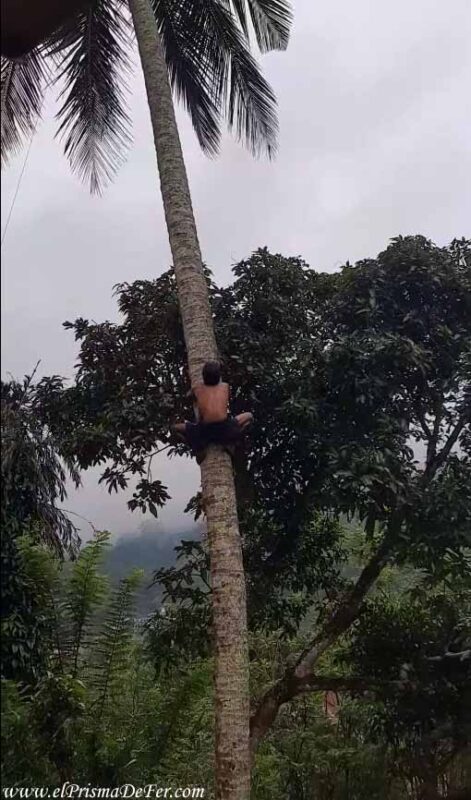
There is no single national language
Although Sinhala and Tamil are the official languages, English serves as a bridge language. Therefore, getting around as a tourist is usually quite easy.
One of the most unique flags in the world
The flag of Sri Lanka is easily recognizable: a golden lion holding a sword on a maroon background.

The lion represents the Sinhalese people and is one of the country's oldest symbols. Additionally, the two vertical stripes, green and orange, symbolize the Muslim and Tamil communities, reflecting the country's cultural diversity.
What is the Sri Lanka Cultural Triangle?
The Cultural Triangle is one of the most important and touristic areas in the country, especially for those seeking to understand the history and identity of Sri Lanka.
It is called this because it forms an imaginary “triangle” between Anuradhapura, Polonnaruwa and Kandy, three key cities that were ancient capitals and religious centers during different periods of the Sinhalese kingdom.
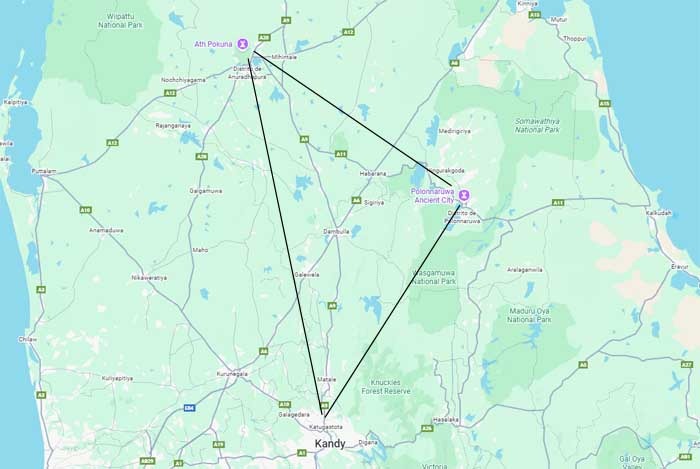
Within this region are some of the most important archaeological sites and temples in the country: the imposing Sigiriya Rock, the ruins of Polonnaruwa, the holy city of Anuradhapura, the Temple of the Tooth of Buddha in Kandy and dozens of monasteries, dagobas, palaces and ancient statues.
It is an area that combines history, spirituality and nature, and is often the starting point for many travelers visiting Sri Lanka for the first time.
Within relatively short distances you can visit World Heritage sites and understand how Buddhist culture and life on the island evolved over the centuries.

Map with my Sri Lanka travel itinerary
What places to visit in Sri Lanka

3 week itinerary in Sri Lanka
Colombo
Although many travelers pass through Colombo only as the gateway to the country, the capital deserves at least a brief exploration.
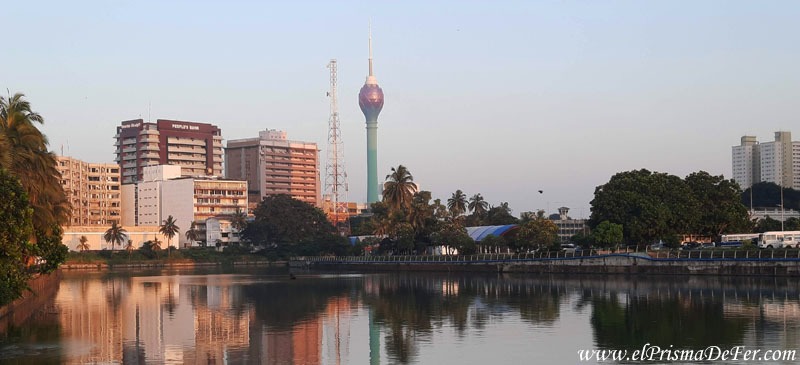
It's a chaotic city but with interesting corners like the Pettah neighborhood, the modern Colombo Port City and the Galle Face Green, where locals and tourists mingle at sunset.

What to see in Colombo, an honest look at Sri Lanka's chaotic capital (coming soon)
It's also a great place to sample local cuisine, visit markets, and take care of errands like exchanging money or activating SIM cards, as everything is simpler and cheaper than in tourist destinations.
Kandy
Kandy is the cultural heart of Sri Lanka and home to the Temple of the Tooth Relic, one of the most sacred sites in Buddhism.

Its central lake and the surrounding hills give it a tranquil atmosphere, very different from the fast pace of Colombo.
Furthermore, Kandy is home to the famous trains to Ella, a journey many consider essential. It's also an excellent base for visiting botanical gardens and small nearby villages.
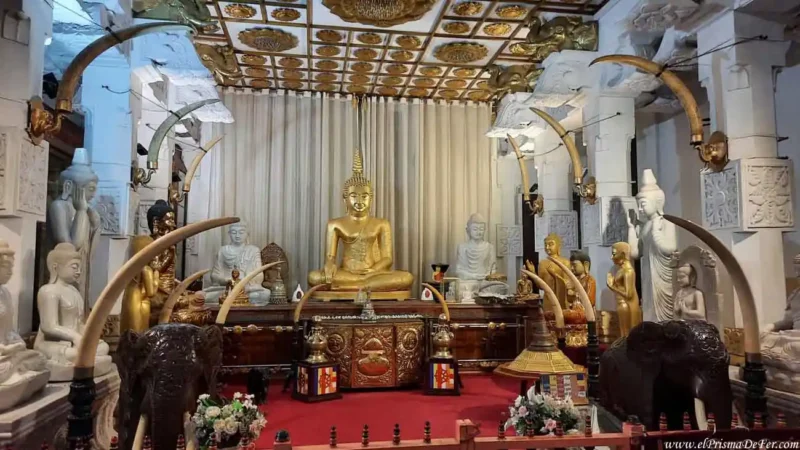
What to see in Kandy, the cultural capital of Sri Lanka (coming soon)
Ella
It's a favorite destination for those seeking nature, mountains, and verdant landscapes. Its iconic hikes, such as Little Adam's Peak or Nine Arches Bridge, are accessible and perfect for all levels.
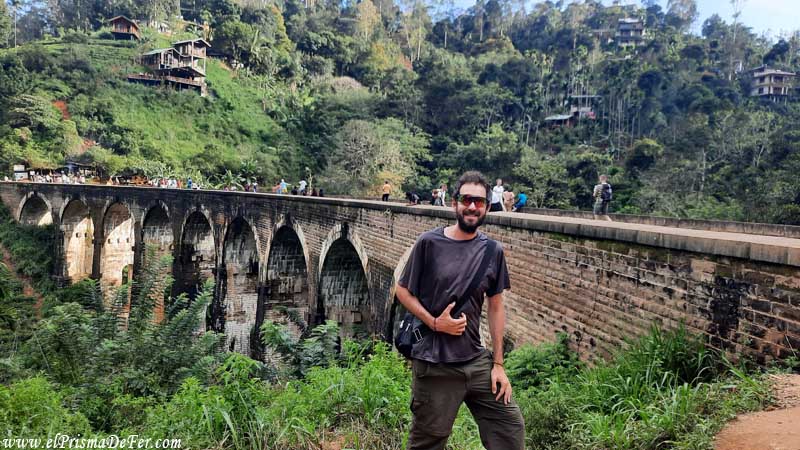
The town has developed considerably in recent years, so there's a good selection of accommodation, cafes, and restaurants. But despite being a tourist destination, it still retains that relaxed mountain village atmosphere that attracts so many travelers.
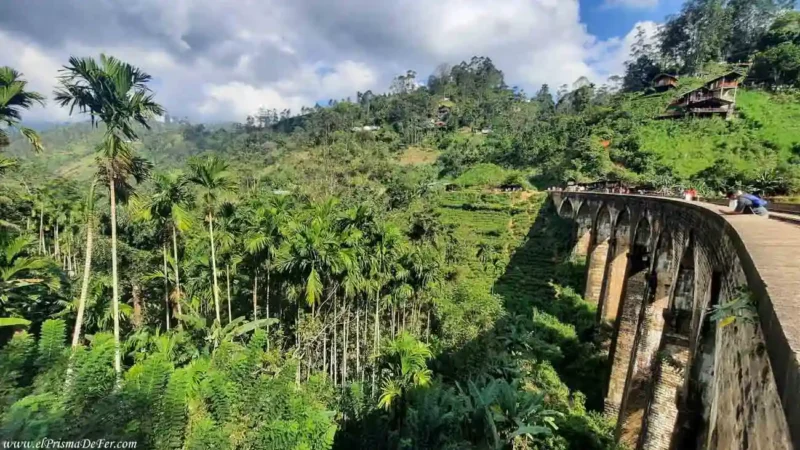
What to do in Ella (coming soon)
Sigiriya
Sigiriya is one of Sri Lanka's most iconic sites. Its famous Lion Rock rises abruptly from the jungle, offering a unique blend of archaeology, history, and nature.
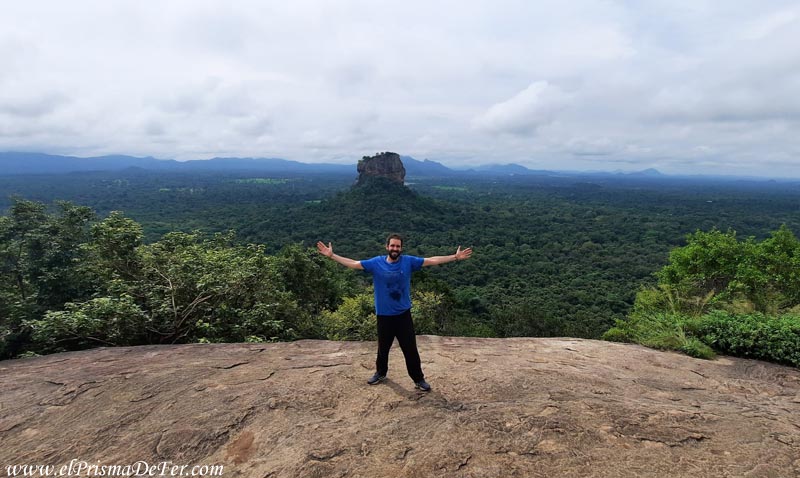
Beyond the rock itself, the complex includes water gardens, canals, and royal ruins that allow one to imagine what life was like in this ancient palace-fortress.
If you want to save money or simply see Sigiriya from another perspective, there is a viewpoint on a nearby hill from where you can appreciate the famous Lion Rock without paying an expensive entrance fee.
The climb is cheaper, less crowded and offers a spectacular view, as from the top you can clearly see how the rock rises abruptly in the middle of the jungle, further highlighting its imposing shape.
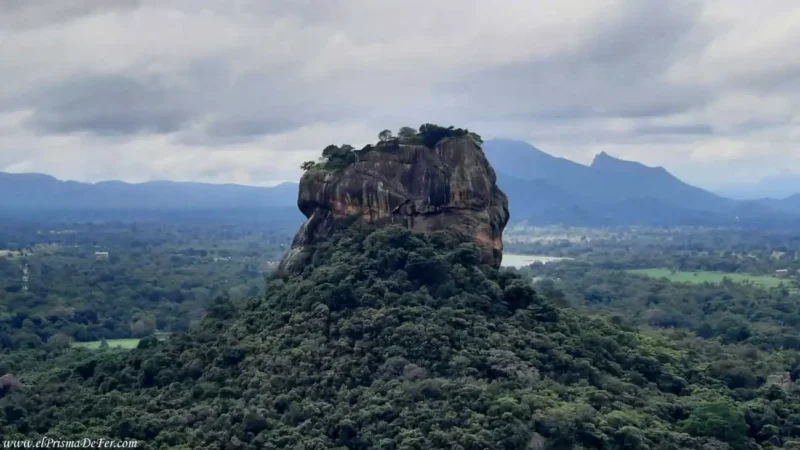
How to visit Sigiriya in Sri Lanka (coming soon)
Polonnaruwa
Polonnaruwa was the medieval capital of Sri Lanka and today is one of the best preserved archaeological sites in the country.

The area is extensive and the most common way to explore it is by bicycle or tuk-tuk, stopping at temples, statues and administrative buildings that tell the story of a kingdom that prospered almost a thousand years ago.
Highlights include the Gal Vihara, with its imposing rock-carved Buddha sculptures, and the remains of the old royal palace.
Although it receives tourists, it is much quieter than Sigiriya, allowing you to experience the visit at a relaxed pace.
The combination of open ruins, wooded areas, and ponds gives it a very distinctive feel, similar to what you'd find at Angkor Wat in Cambodia, although the latter is far more imposing. It's an ideal visit if you enjoy the feeling of exploring a lost city in the heart of nature.
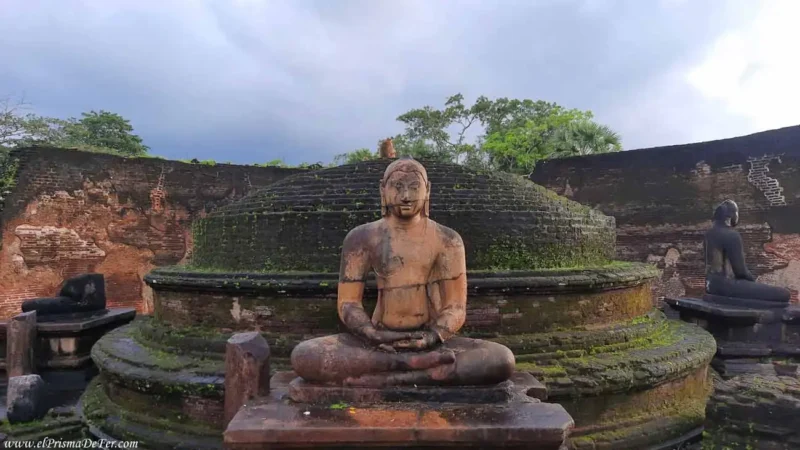
How to visit Polonnaruwa, the former capital of Sri Lanka (coming soon)
Anuradhapura
Anuradhapura is one of the most important religious centers of Buddhism in Sri Lanka. Its enormous dagobas, white stupas, and active temples make it a unique site where archaeology and devotion coexist daily.
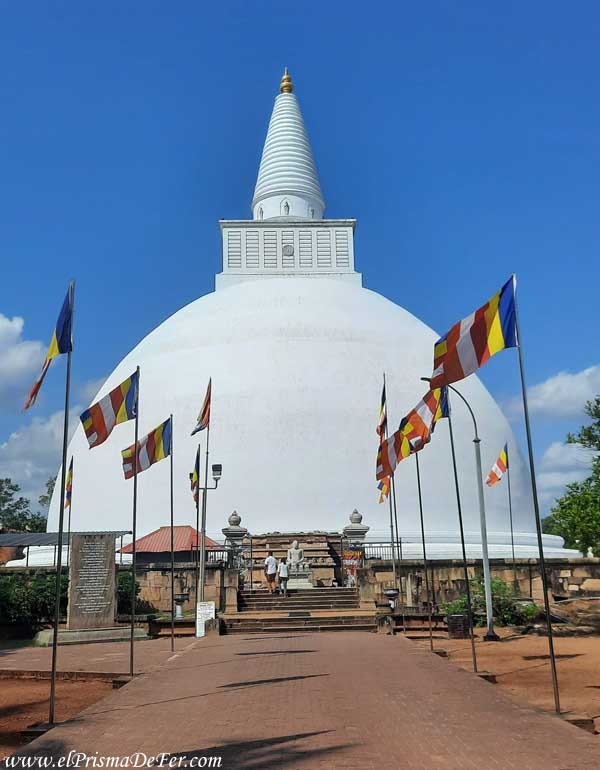
It is common to see pilgrims dressed in white, entire families, and monks performing traditional rituals, which adds a very strong cultural dimension to the visit.
The complex is gigantic and spread over a large area, so it is also usually explored by tuk-tuk or bicycle.

What to see in Anuradhapura, Sri Lanka. Is it worth visiting? (coming soon)
Adam’s Peak (Sri Pada)
Adam's Peak, known locally as Sri Pada, is one of Sri Lanka's most famous treks. It's not technically difficult, but it is physically demanding, involving thousands of steps climbed in the early morning to reach the summit just before sunrise.

The reward: one of the best views in Sri Lanka.
Furthermore, Adam's Peak is a sacred site for multiple religions: Buddhists, Hindus, Muslims, and Christians all attribute different meanings to it. Therefore, during the pilgrimage season, it is usually very crowded, creating a very special atmosphere.
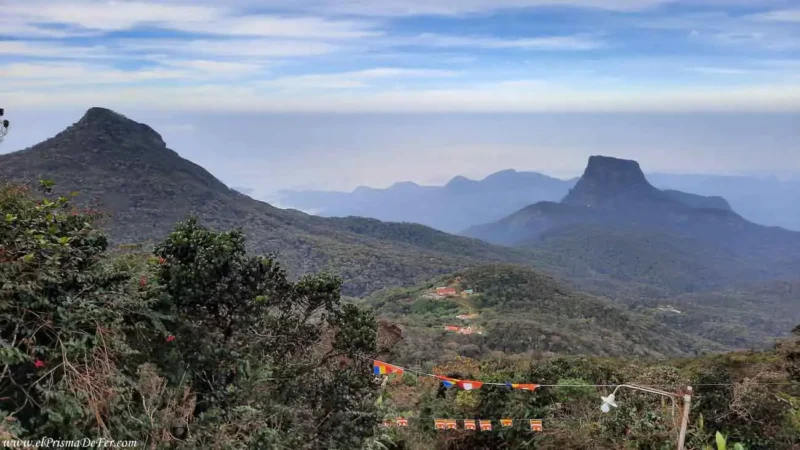
How to climb Adam's Peak in Sri Lanka (coming soon)
Nuwara Eliya
Known as “Little England”, Nuwara Eliya is surrounded by tea plantations and has a cool climate that contrasts with the rest of the country.
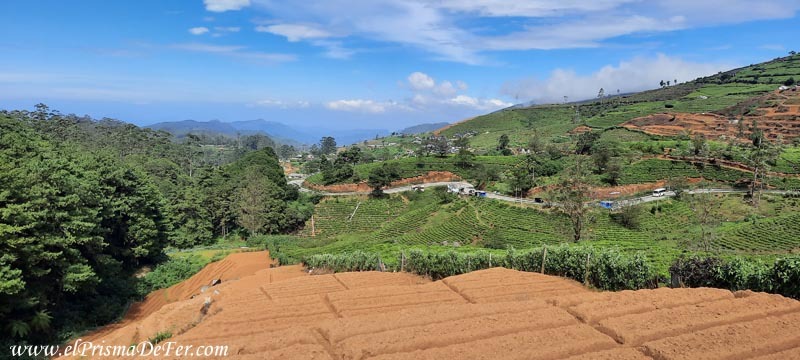
Its mountainous landscapes, lakes, and colonial houses give it a very particular charm.
It is also the starting point for visiting Horton Plains and taking the hike to World's End, one of the most popular hikes in Sri Lanka.
If you're interested in tea, here you'll find some of the most traditional factories to visit.
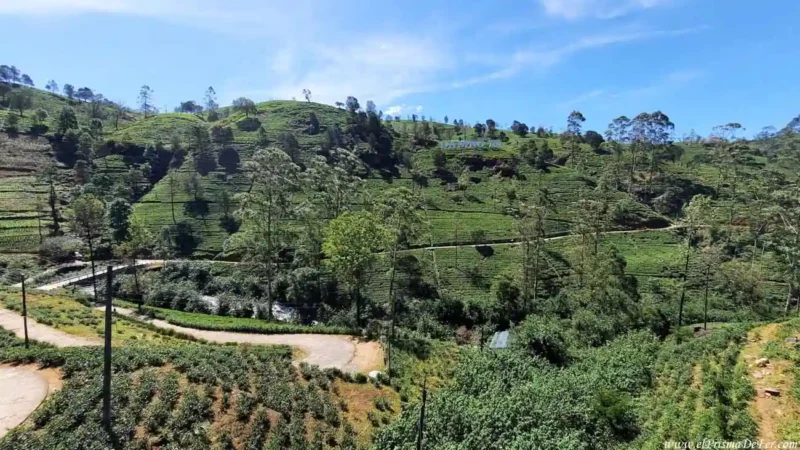
How to visit tea plantations in Sri Lanka from Nuwara Eliya (coming soon)
Galle
This coastal city is famous for its colonial fort, one of the best preserved in South Asia.
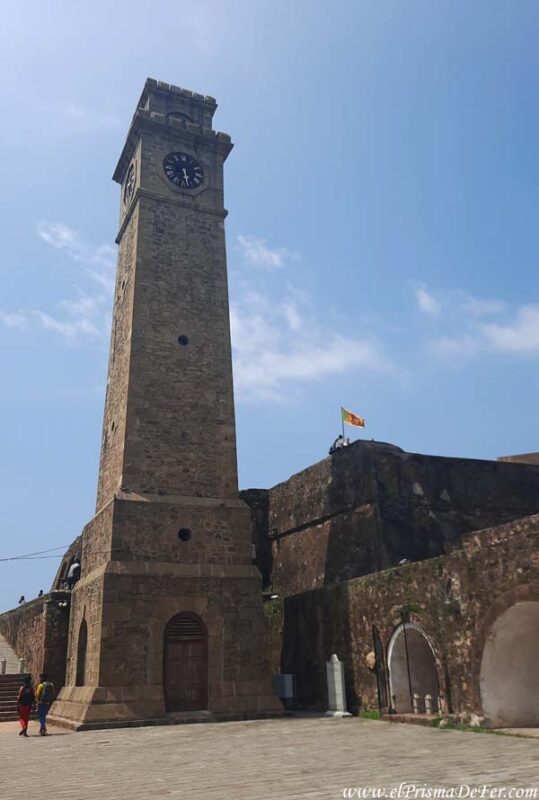
Within the fort's streets, you'll find Dutch architecture, stylish cafes, and ocean views on every corner.
In addition, Galle is an excellent base for exploring nearby beaches such as Unawatuna or Dalawella.

What to see in Galle (coming soon)
South coast (Mirissa, Weligama, Unawatuna)
The south coast is synonymous with relaxation, surfing, and beach life. Mirissa is known for its peaceful atmosphere and whale-watching excursions, while Weligama is one of the best spots in the country to learn to surf.

In this area you will find very different beaches, from gentle bays to ideal spots for diving and snorkeling.
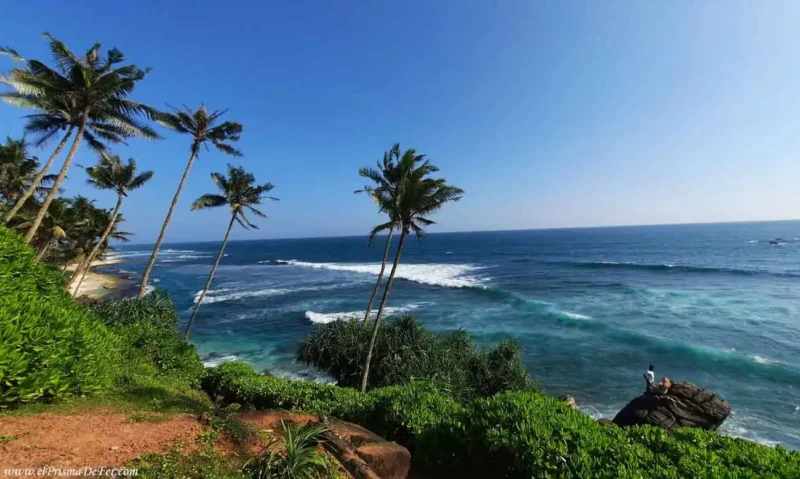
Things to do in Mirissa (coming soon)
It's an easy region to explore and perfect for taking a few days off.
East Coast (Arugam Bay, Trincomalee)
The east coast has a distinct vibe and is the ideal destination when the monsoon hits the south. Arugam Bay is the epicenter of surfing between May and September, with world-renowned waves.
Trincomalee, for its part, combines tranquil beaches, important temples, and abundant marine life.
If you're looking for a place with good weather outside of the southern peak season, this is the place.
National Parks and Elephants in Sri Lanka
Sri Lanka is one of the best places in Asia to see elephants in the wild, and the country's national parks are a must-see if you love nature.

Unlike other destinations where sightings are more unpredictable, here the chances of seeing them are really high, especially in specific areas where these herds move with complete naturalness.
One of the most popular is Minneriya National Park, famous for "The Gathering," a phenomenon that occurs between July and October where hundreds of elephants congregate around the reservoir to drink water. It's one of the world's largest wildlife events, and if you happen to be there during those dates, it's absolutely worth seeing.
Another highly recommended park is Udawalawe, perhaps the best for those who want to guarantee sightings. Here, the herds are numerous, and the semi-open landscape makes them much easier to find. Furthermore, safaris tend to be more relaxed and less crowded than in Yala.
Speaking of Yala National Park, it is the most famous in the country, known for its high density of leopards. Although the focus is often on these big cats, it's also an excellent place to see elephants, buffalo, deer, and a huge variety of birds.
In all cases, the safaris are done in open jeeps and last between 3 and 4 hours. Ideally, you should go very early in the morning or near sunset, when the animals are most active.
And importantly: choose responsible tour operators who maintain a safe distance and don't chase the animals. A good safari is one where the elephants feel calm and at ease, without feeling threatened.

Typical Sri Lankan foods
Sri Lankan cuisine is one of the most vibrant in South Asia. It is based heavily on rice, coconut, and a vast array of spices.
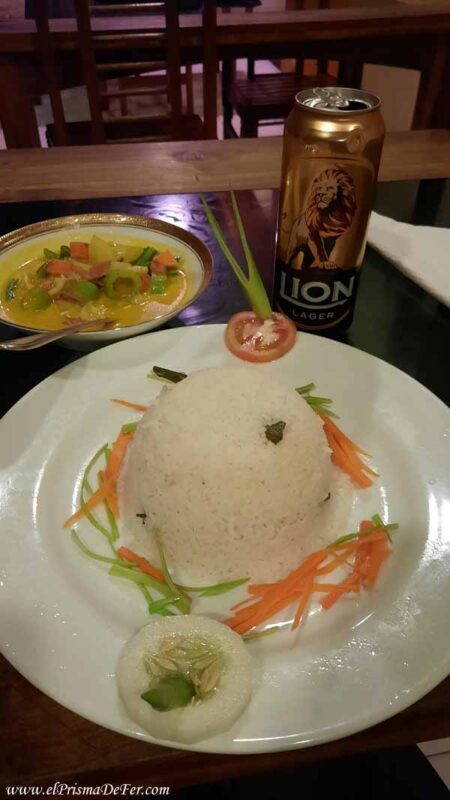
The first thing you'll notice is that local dishes often come with small bowls of sauces, curries, and chutneys that blend sweet, spicy, and sour flavors. And while it's delicious, I should warn you that it was quite spicy for me, even when you order "not spicy," it's almost always hot. It's all part of the experience.
The star dish is rice & curry, which can include chicken, fish or vegetables, and always comes with various side dishes that vary depending on the region.
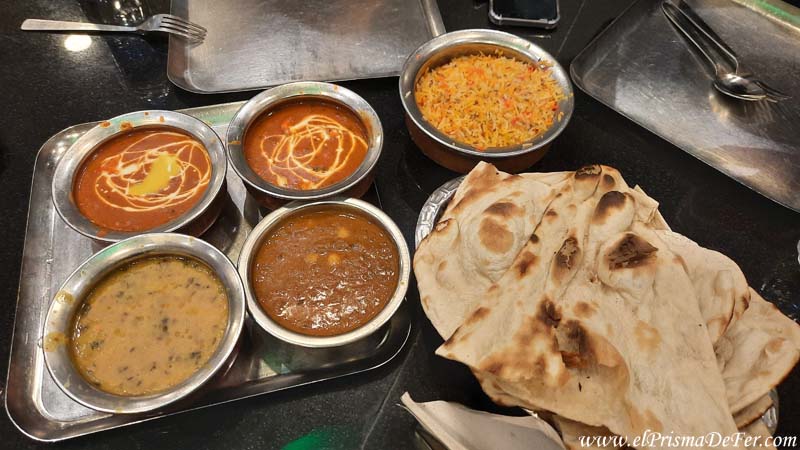
You'll also find kottu roti, a classic street food made with chopped roti, vegetables, egg and spices, prepared by hitting it against the griddle (you can literally hear the "tac tac tac" from half a block away).
Another must-try is the hoppers, a kind of crispy pancake in the shape of a bowl, which can come alone, with egg or accompanied by sambol.
Spicy food lovers will be happy: the pol sambol, the lunu miris and many curries have a level that makes anyone sweat.
And if you're looking for something milder, you can always take refuge in string hoppers (steamed rice noodles), Dutch-influenced lamprais, or seafood dishes found on the coast.
In general, eating is cheap, plentiful, and an essential part of the trip. Just be prepared that, even with a good tolerance for spice, some dishes might leave you breathing fire.
How much budget do you need to travel to Sri Lanka?
Traveling around Sri Lanka can be surprisingly affordable, especially if you backpack or travel independently. Generally speaking, the average daily cost ranges between 25 and 60 USD per person, depending on the type of accommodation, transport and activities you choose.
Basic accommodations (guesthouses, homestays, and hostels) are very affordable, while mid-range hotels remain reasonable compared to other popular destinations in Asia.
Eating at local restaurants also helps keep the budget down; a typical dish can cost the same as a coffee in Europe.
Public transport, including trains and buses, is extremely cheap, although somewhat slow and sometimes uncomfortable. Entrance fees to major attractions are the biggest expense, as many archaeological sites and temples have high tourist fees, such as Polonnaruwa at USD 30.
Is it safe to travel to Sri Lanka?
In general, Sri Lanka is a safe country to travel to, even for those traveling alone or backpacking.
Local people are generally very friendly and welcoming, and tourist areas are accustomed to receiving visitors from all over the world. Cases of violence against tourists are extremely rare, and in most destinations across the country, the atmosphere is relaxed both day and night.

That said, there are a few things to keep in mind for a more worry-free trip. The most common is the "inflated price" scam, especially with tuk-tuks or some shops. Nothing serious, but it is a good idea to use apps like PickMe to get clearer prices and avoid arguments.
On the beaches, it's advisable to keep an eye on your belongings if you're going into the water, and on very crowded trains (like the one from Kandy to Ella) just be mindful of your cell phone and camera.
Regarding the political and economic situation, Sri Lanka experienced difficult times in previous years, but today the country is functioning normally. Power outages and fuel shortages are no longer a problem for the average tourist. As for natural disasters, the only thing to monitor is the monsoon season, not because of safety concerns, but because it can disrupt travel plans.
If you're used to traveling through India, Nepal, or Southeast Asia, Sri Lanka will probably seem even more peaceful.
Best time to travel to Sri Lanka
Determining the best time to visit Sri Lanka can be a little confusing at first, because the country is affected by two distinct monsoons, which don't occur at the same time across the entire territory. The advantage is that there is always some area with good weather, regardless of the month.

Dry season in the south and west (Colombo, Galle, Mirissa, Hikkaduwa)
- Best time: December to March
- It's the perfect time to explore the south coast, enjoy its beaches and visit colonial cities like Galle.
- The sea is calmer and the weather is more stable.
Dry season in the east (Arugam Bay, Trincomalee, Batticaloa)
- Best time: May to September
- This part of the country has its "high" season when the rest is experiencing rain.
- It's the best time to explore the east coast or combine culture with the beach.
For surfers: two coasts, two seasons
Sri Lanka is a highly valued destination for surfers of all levels, and its double monsoon season works in its favor:
- South and southwest (Weligama, Hikkaduwa, Mirissa): the best waves arrive between November and April.
- East (Arugam Bay): from May to September, with ideal conditions for intermediate and advanced surfing.
If your main goal is to surf, simply travel to the right coast for the right date.
Interior and mountains (Kandy, Ella, Nuwara Eliya)
- They are cool destinations all year round.
- Avoid October and November, when the rains are usually more intense and can affect roads and trails.
How long should you travel to Sri Lanka?
Sri Lanka may seem like a small country on the map, but don't be fooled, the distances, the changing weather and the pace of travel make it a destination to enjoy at a leisurely pace.
In general, ideally you should dedicate between 10 and 14 days to properly cover the most important sights without rushing around. With that time, you can combine culture, nature, beaches, and scenic train rides without feeling like you're missing out on anything.
If you have a week, you'll have to choose: either focus on the cultural area (Sigiriya, Kandy, Ella) or go straight south to enjoy the beaches. Combining both isn't impossible, but it does involve long journeys and busy days.
With two weeks, you can already put together a more complete itinerary, such as visiting the Cultural Triangle, taking the famous train from Kandy to Ella, touring tea plantations, going on a safari to see elephants and ending up on the beaches of the south or east depending on the time of year.
And if you have three weeks or more, even better. It allows you to include less visited destinations like Jaffna, explore national parks at a more leisurely pace, go trekking on Adam's Peak, or simply spend a few extra days relaxing on the beaches.
Support The Prism of Fer!
Your support helps me continue creating free content on the blog. Thank you so much!


